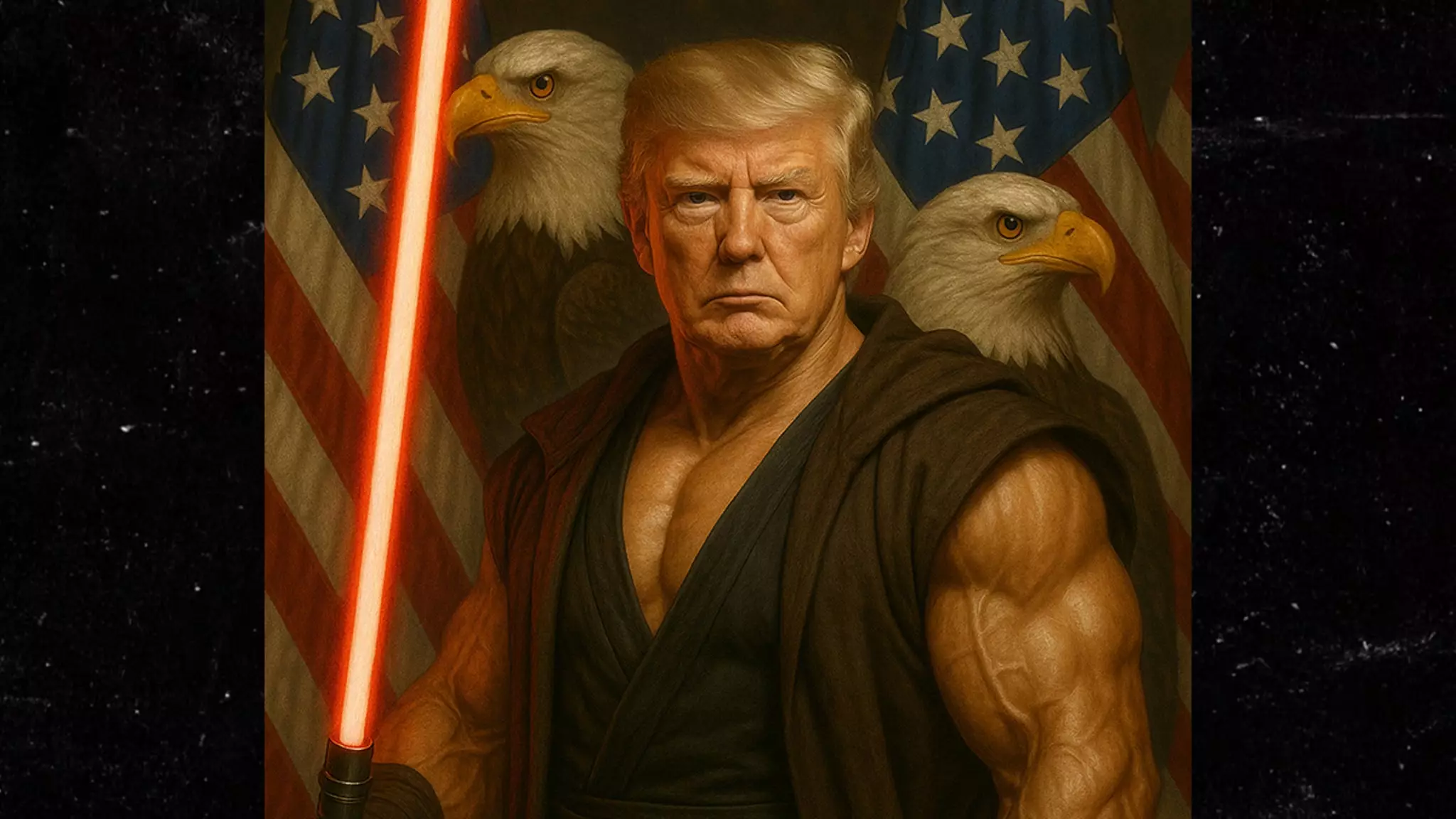In an incredible twist that merges pop culture with politics, the White House chose to celebrate Star Wars Day by releasing an artificial intelligence-generated image of former President Donald Trump clad in Star Wars attire. Reimagined as a robust figure in a sleeveless cloak, brandishing a red lightsaber, Trump appears to embody not just a character but a controversial representation of authority and power. This portrayal raises eyebrows and prompts debate about the symbolism woven into the imagery, which, while amusing, is also profoundly loaded in its implications.
The choice of a red lightsaber is particularly deliberate. In the Star Wars universe, red signifies the Sith—a faction associated with tyranny, aggression, and the desire for absolute control. Trump’s supporters might suggest this is a misinterpretation, arguing instead that perhaps it could be seen as an orange lightsaber, mirroring his often-debated skin tone. However, this revisiting of the light saber’s meaning dilutes the strong ideological undercurrent that comes with its traditional associations. The imagery itself—complete with a backdrop of bald eagles—draws on an archetype of American greatness, creating a meld of patriotism and power that is not unfamiliar in Trump’s political narrative.
The Echoes of the Empire
While many fans engage in the playful banter of fandom and politics, the image beckons a deeper conversation about the nature of power and its shadowy implications. The Sith, in essence, represent authoritarianism, reminiscent of trends that have seeped into modern politics. Notably, George Lucas drew inspiration from wartime regimes when conceptualizing the Empire, rendering the film’s central conflicts both a narrative of good versus evil and a reflection on historical tyrannies. The analogy here is striking; Trump’s political tenure has often been characterized by controversial rhetoric and policies that many argue edge towards authoritarianism.
The White House’s message accompanying the release adds an incendiary element. Describing political adversaries as “Radical Left Lunatics” and likening them to villains in the Star Wars saga not only polarizes but also entrenches the binary of good versus evil that is so prevalent in both the films and political discourse. There is an implicit suggestion that aligning with the Sith is justified in the battle against perceived enemies, raising questions about the ethical implications of using such evocative imagery in political messaging.
The Appeal to the Pop Culture Jedi
Moreover, the reaction from both sides of the political spectrum illustrates the effectiveness of using pop culture to bolster political narratives. Trump’s supporters see valor in his supposed alignment with the “dark side,” while critics seize the opportunity to warn of the perils that come with such a discerning embrace. The contrast is stark: some view Trump as a warrior against a corrupted status quo, while the opposing perspective sees an unsettling reflection of the Empire’s malevolence.
As the debate simmers about Icons and their symbolic meanings, the call for responses from key cultural figures like Mark Hamill—who famously portrays Luke Skywalker—is a reminder of the intersectionality of media and politics. It reveals how public figures can wield significant influence in shaping public perception and discourse.
In this amalgamation of Star Wars lore and modern political identity, we observe not merely an affirmation of power but a complex dialogue about where that power resides and how it is portrayed. The lightsaber, whether red or orange, illuminates a critical narrative about choice, identity, and the multifaceted nature of authority in our contemporary landscape.

